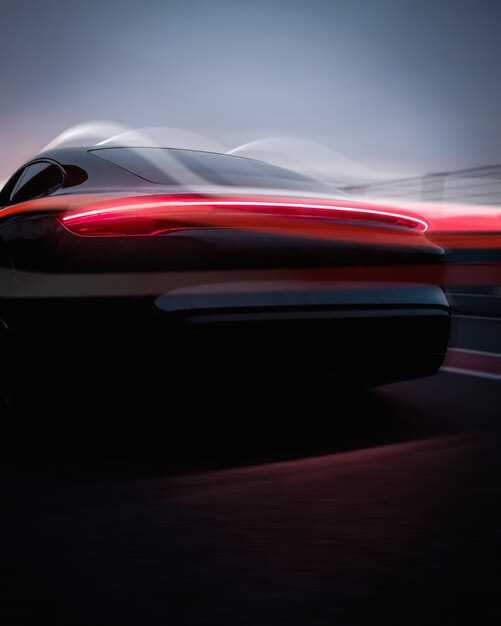
Ferrari, a name synonymous with speed, innovation, and luxury, has undergone a remarkable transformation since its inception in the early 20th century. Initially founded by Enzo Ferrari in 1939 as a division of Alfa Romeo dedicated to racing, the company quickly distinguished itself in the motorsport arena. Its early successes on the racetrack laid the groundwork for what would become one of the most iconic brands in automotive history.
As the decades progressed, Ferrari’s reputation for high-performance racing vehicles earned it a dedicated following among enthusiasts and collectors. The introduction of legendary models like the Ferrari 250 GTO and the Ferrari F40 not only cemented its status in racing but also set the stage for a shift toward the luxury market. The transition was marked by a strategic focus on exclusivity and premium craftsmanship, allowing the brand to cater to affluent consumers seeking both performance and prestige.
Today, Ferrari stands at the intersection of motorsport heritage and luxury lifestyle. With a commitment to innovation, the brand has expanded beyond traditional racing roots to offer a range of bespoke products and experiences, creating a holistic luxury brand identity. The evolution of Ferrari exemplifies the seamless blend of racing excellence and luxury, making it a leading force in both the automotive and luxury goods markets.
How Ferrari Transitioned from a Race-Driven Manufacturer to a Status Symbol
Ferrari’s journey from a race-focused manufacturer to an emblem of luxury began in the mid-20th century. Founded by Enzo Ferrari in 1939, the brand initially prioritized its racing heritage, showcasing impressive performance on the track with models such as the 125 S. Victories in numerous racing events, including Formula 1 and endurance races like the Mille Miglia, solidified Ferrari’s reputation for engineering excellence.
In the 1960s and 1970s, as the brand gained fame through its success in motorsports, Ferrari began to cultivate a broader appeal. The introduction of road-legal variants of their racing cars, such as the Ferrari 250 GTO, created a direct link between motorsport and everyday driving. These models combined cutting-edge technology with exquisite design, attracting wealthy enthusiasts who desired a piece of the Ferrari legacy.
Throughout the 1980s and 1990s, the brand focused on refining its image. Marketing strategies shifted to highlight exclusivity and sophistication, promoting Ferrari not just as a car manufacturer, but as a lifestyle choice. Limited production runs for specific models, such as the F40 and F50, further enhanced this status, turning them into coveted collector’s items.
The new millennium saw Ferrari embracing technology and innovation, exemplified by the introduction of hybrid models like the LaFerrari. By integrating advanced engineering with sustainable practices, the company appealed not only to traditional car enthusiasts but also to an environmentally conscious elite seeking prestigious performance vehicles.
Ferrari’s collaborations with luxury brands and exclusive partnerships expanded its reach into the high-end lifestyle market. The introduction of branded merchandise, from apparel to accessories, positioned Ferrari as a comprehensive luxury brand rather than solely an automotive manufacturer. This multifaceted approach allowed the brand to maintain its racing roots while captivating a wider audience fascinated by luxury, status, and performance.
Today, Ferrari stands as a symbol of wealth and refinement. Its ability to navigate the delicate balance between maintaining a storied racing heritage and evolving into a high-status luxury brand illustrates its mastery of market dynamics and consumer sentiment. As a result, owning a Ferrari is not just about possessing a high-performance vehicle; it represents a lifestyle filled with prestige and aspiration.
The Role of Design and Innovation in Enhancing Ferrari’s Luxury Appeal

The design philosophy of Ferrari serves as a crucial element in establishing its identity as a luxury brand. From the iconic shape of the Ferrari 250 GTO to the modern aerodynamic lines of the SF90 Stradale, the aesthetics of each model reflect a seamless blend of beauty and performance. The distinctive styling not only highlights the brand’s racing heritage but also appeals to the sensibilities of affluent consumers who seek exclusivity and status. Each design iteration incorporates elements that elevate the vehicle’s presence, making it a statement piece on the road and at any prestigious event.
Innovation plays a key role in enhancing Ferrari’s luxury appeal, manifested through cutting-edge technology and engineering excellence. The company invests heavily in research and development, ensuring that each new model features advancements in performance, safety, and driver experience. Innovations like hybrid technology in models such as the LaFerrari showcase how Ferrari commits to blending sustainability with the exhilarating performance customers expect. This commitment positions Ferrari as a forward-thinking luxury car manufacturer, appealing to a modern clientele that values both prestige and environmental consciousness.
Moreover, the use of high-quality materials further contributes to the luxury aspect of Ferrari vehicles. The interiors are meticulously crafted with premium leather, carbon fiber, and bespoke finishes, creating an atmosphere of opulence. Customization options allow clients to personalize their cars extensively, enhancing the sense of ownership and exclusivity. This attention to detail in both design and materials reinforces the brand’s luxury position, differentiating Ferrari from mass-market competitors.
Collaborations with renowned designers and artists further amplify Ferrari’s luxury status. These partnerships result in special edition models that are not only vehicles but also works of art. Such limited editions create a sense of urgency and exclusivity, appealing to collectors and enthusiasts seeking unique pieces of automotive history. By integrating artistic concepts into automotive design, Ferrari reinforces its image as a luxury brand that transcends mere transportation.
In conclusion, the interplay of innovative design and advanced technology is foundational to Ferrari’s transition from a racing institution to a luxury brand. By prioritizing aesthetics, quality, and exclusivity, Ferrari successfully captivates its high-end clientele while maintaining its storied racing legacy. This duality of purpose ensures that Ferrari remains synonymous with luxury and performance in the automotive landscape.
Understanding Ferrari’s Marketing Strategies that Fostered Brand Prestige

Ferrari has masterfully curated its marketing strategies to elevate its status from a racing powerhouse to a symbol of luxury and exclusivity. Central to this evolution is the brand’s commitment to limited production. By controlling supply, Ferrari ensures high demand and maintains an air of exclusivity that resonates with affluent consumers.
Another key strategy is the strategic use of storytelling. Ferrari leverages its rich racing heritage to create a narrative that connects with both car enthusiasts and luxury buyers. This narrative emphasizes innovation, performance, and passion, making each model not just a vehicle, but a piece of art and history.
Experiential marketing plays a pivotal role in Ferrari’s strategy. Exclusive events, such as track days and VIP factory tours, allow potential buyers to immerse themselves in the brand experience. These events foster a deeper emotional connection and reinforce the perception of Ferrari as a luxury lifestyle brand.
Collaborations with other high-end brands have also bolstered Ferrari’s prestige. Limited edition merchandise and partnerships with luxury brands in sectors like fashion and watches enhance its image as an emblem of sophistication and refinement.
Moreover, Ferrari’s marketing communications are consistently aligned with its brand values. Through high-end advertising campaigns, carefully curated social media presence, and selective sponsorships, Ferrari projects a cohesive luxury image. These efforts not only attract prospective buyers but also enhance loyalty among existing customers.
In the digital realm, Ferrari has embraced modern technologies. Engaging content through social media platforms and the use of high-quality visuals showcase the beauty and performance of their vehicles. Online campaigns strategically target affluent demographics, driving interest and desirability.
Lastly, Ferrari understands the importance of maintaining its heritage while embracing innovation. The introduction of hybrid and electric models is evidence of the brand’s ability to evolve without compromising its core values. This balance not only appeals to environmentally conscious consumers but also ensures that Ferrari remains at the forefront of automotive innovation.
In conclusion, Ferrari’s marketing strategies are intricately designed to uphold and elevate its brand prestige. Through exclusivity, storytelling, experiential marketing, and strategic partnerships, Ferrari continues to define itself as the ultimate symbol of luxury in the automotive world.
